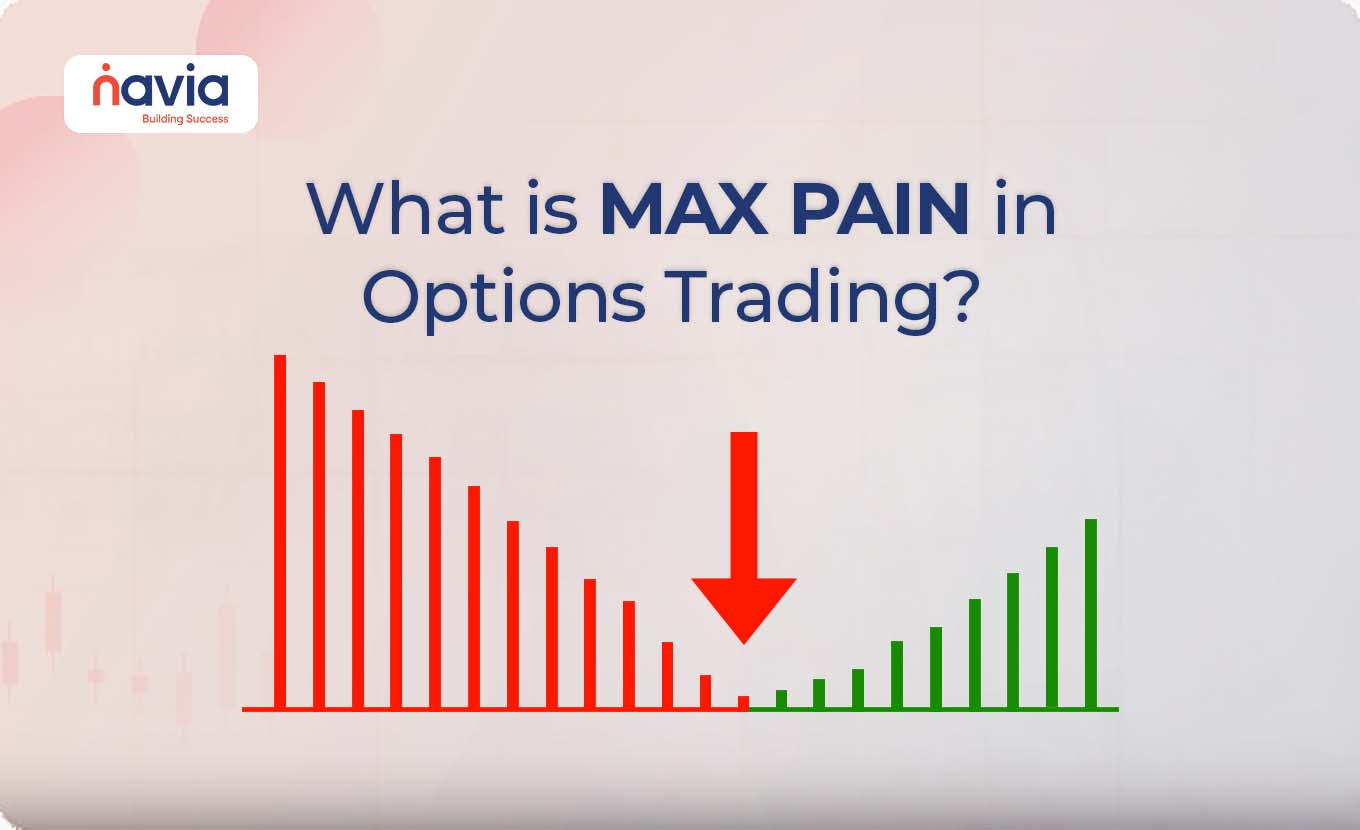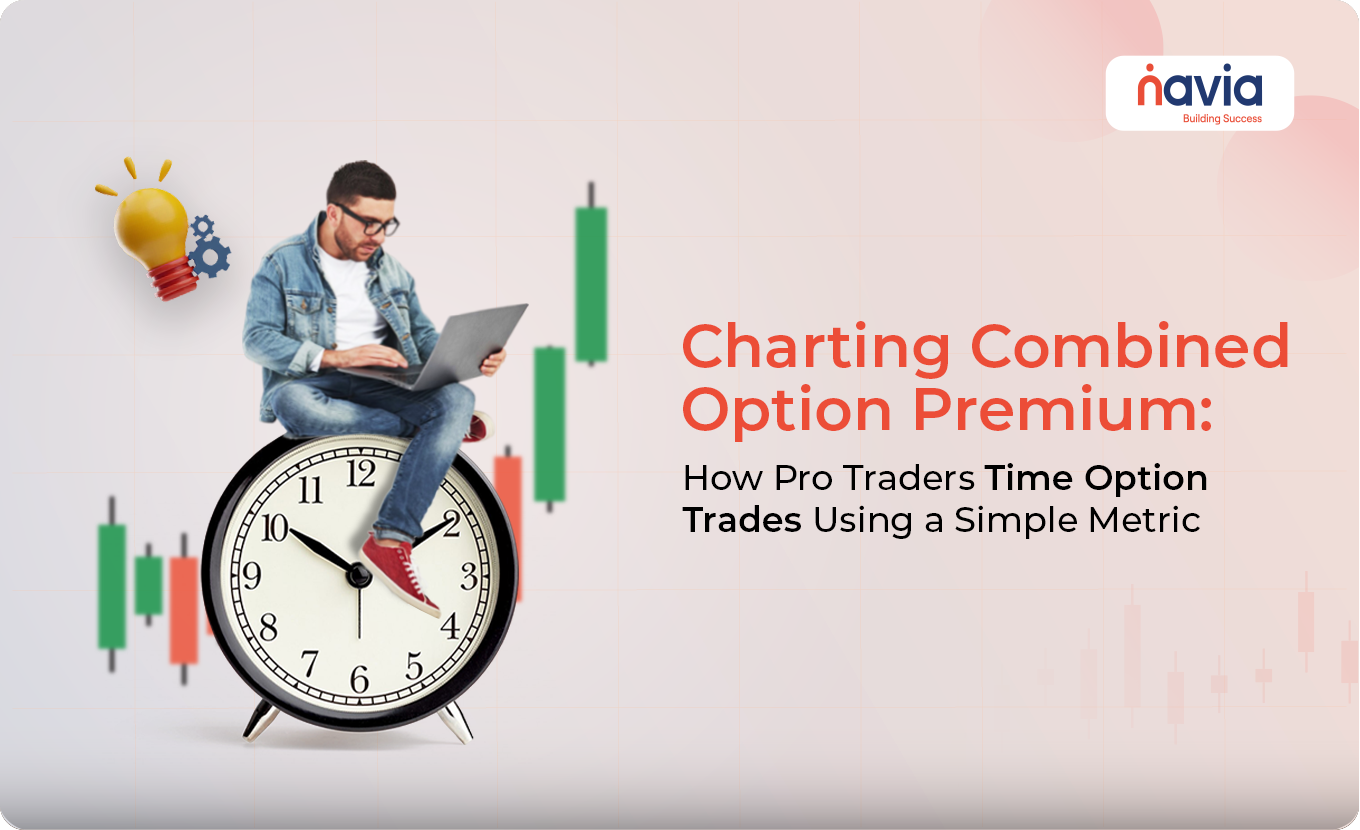Option Strategies for Profitable Trading: Which to Use and When?

Options trading offers a range of strategies that can be tailored to different market conditions, risk appetites, and financial goals. However, choosing the right strategy can be overwhelming, especially for beginners. Understanding which option strategy to deploy and when is crucial to maximizing profits and minimizing risks. In this blog, we’ll explore some of the most popular option strategies, explaining when and how to use them with easy-to-understand examples. We’ll also discuss how the Navia Mobile App can enhance your trading experience with its free option strategy builder and pre-built strategies.
What Are Option Strategies?
Option strategies involve the simultaneous buying and selling of different options to create a specific risk-reward profile. These strategies can be used to hedge risks, generate income, or speculate on market movements. The key to successful options trading is knowing which strategy to use under specific market conditions.
| Strategy Name | When to Use | Market Outlook | Risk | Profit Potential |
|---|---|---|---|---|
| Long Call | Expect significant upward movement in the underlying asset’s price | Bullish | Limited to the premium paid | Unlimited |
| Long Put | Expect significant downward movement in the underlying asset’s price | Bearish | Limited to the premium paid | Significant, up to the strike price minus the premium |
| Covered Call | Expect limited upside in the underlying asset and want to generate additional income | Slightly Bullish to Neutral | Risk of loss on the underlying asset | Limited to strike price plus premium |
| Protective Put | Hold a long position and want to protect against potential downside risk | Bullish with Protection | Limited to the cost of the put option | Unlimited in the underlying asset; losses limited by the put |
| Straddle | Expect significant volatility but are unsure of the direction | Highly Volatile | Limited to the total premium paid | Unlimited in either direction |
| Strangle | Expect significant volatility but are unsure of the direction and want a cheaper alternative to a straddle | Highly Volatile | Limited to the total premium paid | Unlimited in either direction |
| Iron Condor | Expect the underlying asset’s price to remain within a specific range | Neutral | Limited to the difference between strikes minus net credit | Limited to the net credit received |
| Butterfly Spread | Expect the underlying asset’s price to remain stable | Neutral | Limited to the net cost of the options | Limited, maximized when the price is at the middle strike price |
1. Long Call Strategy
💬 Best Used When: You expect a significant upward movement in the underlying asset’s price.
The long call strategy involves buying a call option, which gives you the right (but not the obligation) to purchase the underlying asset at a predetermined price (the strike price) before the option expires. This strategy is straightforward and offers unlimited profit potential if the underlying asset’s price rises above the strike price, minus the premium paid for the option.
🔷 Example: Suppose a stock is trading at ₹1,000, and you expect it to rise significantly over the next month. You buy a call option with a strike price of ₹1,050 for a premium of ₹30. If the stock price rises to ₹1,100, your profit would be ₹20 per share (₹1,100 – ₹1,050 – ₹30), minus any transaction costs.
➝ Risk: The maximum loss is limited to the premium paid (₹30 per share in this example), even if the stock price falls below the strike price.
2. Long Put Strategy
💬 Best Used When: You expect a significant downward movement in the underlying asset’s price.
The long put strategy involves buying a put option, which gives you the right to sell the underlying asset at a predetermined strike price before the option expires. This strategy profits from a decline in the underlying asset’s price.
🔷 Example: Suppose a stock is trading at ₹1,000, and you anticipate a decline. You buy a put option with a strike price of ₹950 for a premium of ₹25. If the stock price falls to ₹900, your profit would be ₹25 per share (₹950 – ₹900 – ₹25), minus any transaction costs.
➝ Risk: The maximum loss is limited to the premium paid (₹25 per share in this example), even if the stock price rises above the strike price.
3. Covered Call Strategy
💬Best Used When: You expect the underlying asset to have limited upside potential and want to generate additional income.
A covered call strategy involves holding a long position in the underlying asset and selling a call option on that asset. The premium received from selling the call option provides income, while the underlying asset provides potential capital gains.
🔷Example: You own 100 shares of a stock currently trading at ₹500. You sell a call option with a strike price of ₹550 for a premium of ₹10 per share. If the stock price remains below ₹550, you keep the premium as profit. If the stock price rises above ₹550, you sell the stock at ₹550, capturing a capital gain plus the premium received.
➝Risk: The risk is limited to the potential loss on the underlying asset if its price falls. The profit is capped at the strike price (₹550) plus the premium received.
4. Protective Put Strategy
💬 Best Used When: You hold a long position in the underlying asset and want to protect against potential downside risk.
A protective put strategy involves holding a long position in the underlying asset and buying a put option on that asset. This strategy acts as an insurance policy, limiting potential losses if the asset’s price declines.
🔷 Example: You own 100 shares of a stock currently trading at ₹800. You buy a put option with a strike price of ₹750 for a premium of ₹20 per share. If the stock price falls to ₹700, your losses on the stock are limited because you can sell it at ₹750 using the put option. Your net loss would be ₹70 per share (₹800 – ₹750 – ₹20), minus any transaction costs.
➝ Risk: The maximum loss is limited to the difference between the purchase price and the strike price, plus the premium paid.
5. Straddle Strategy
💬 Best Used When: You expect significant volatility in the underlying asset’s price but are unsure of the direction.
A straddle strategy involves buying both a call and a put option with the same strike price and expiration date. This strategy profits from large price movements in either direction.
🔷 Example: A stock is trading at ₹1,000, and you expect a big move due to an upcoming earnings announcement but are unsure of the direction. You buy a call option and a put option, both with a strike price of ₹1,000, for a combined premium of ₹50 per share. If the stock price moves to ₹1,100 or ₹900, you stand to profit. For instance, if the stock moves to ₹1,100, your profit from the call option would be ₹50 per share (₹1,100 – ₹1,000 – ₹50), minus any transaction costs.
➝ Risk: The maximum loss is limited to the total premium paid (₹50 per share in this example) if the stock price remains near the strike price.
6. Strangle Strategy
💬 Best Used When: You expect significant volatility but are less certain of the direction and want a cheaper alternative to a straddle.
A strangle strategy involves buying a call option and a put option with different strike prices but the same expiration date. This strategy is like a straddle but typically costs less because the options are further out of the money.
🔷 Example: A stock is trading at ₹1,000, and you expect a large move, so you buy a call option with a strike price of ₹1,050 and a put option with a strike price of ₹950, paying a combined premium of ₹40 per share. If the stock moves to ₹1,100 or ₹900, you profit from the corresponding option. For example, if the stock moves to ₹1,100, the call option could yield a profit, minus the combined premium.
➝ Risk: The maximum loss is limited to the total premium paid (₹40 per share in this example) if the stock price remains between the strike prices.
7. Iron Condor Strategy
💬 Best Used When: You expect the underlying asset’s price to remain within a specific range.
An iron condor strategy involves selling an out-of-the-money call and put option, while simultaneously buying a further out-of-the-money call and put option. This strategy is a combination of a bear call spread and a bull put spread, and it profits from low volatility.
🔷 Example: A stock is trading at ₹1,000, and you expect it to remain between ₹950 and ₹1,050. You sell a call option with a strike price of ₹1,050 and a put option with a strike price of ₹950. You also buy a call option with a strike price of ₹1,100 and a put option with a strike price of ₹900 to limit potential losses. The premium collected from selling the options exceeds the cost of buying the options, generating net credit.
➝ Risk: The maximum risk is limited to the difference between the strike prices of the options sold and bought, minus the net credit received.
8. Butterfly Spread Strategy
💬 Best Used When: You expect the underlying asset’s price to remain stable.
A butterfly spread strategy involves buying one call (or put) option at a lower strike price, selling two call (or put) options at a middle strike price, and buying one call (or put) option at a higher strike price. This strategy profits when the underlying asset’s price remains close to the middle strike price at expiration.
🔷 Example: A stock is trading at ₹1,000, and you expect it to remain stable around ₹1,000. You buy a call option with a strike price of ₹950, sell two call options with a strike price of ₹1,000, and buy a call option with a strike price of ₹1,050. The premium collected from selling the options helps offset the cost of buying the options, resulting in a limited profit if the stock remains near ₹1,000.
➝ Risk: The maximum risk is limited to the net cost of the options, while the maximum profit is achieved if the stock price remains close to the middle strike price at expiration.
How to Use Navia Mobile App for Better Option Trading
The Navia Mobile App is an invaluable tool for traders looking to implement these strategies effectively. Here’s how you can use the app to enhance your options trading experience:
Free Option Strategy Builder: The Navia Mobile App comes with a built-in, free option strategy builder that allows you to create custom strategies or choose from pre-built ones like Strangle, Straddle, Iron Condor, and Butterfly. This feature helps you analyze potential trades and understand the risk-reward profile of each strategy.
Real-Time Data The app provides real-time market data, helping you make timely decisions when implementing these strategies. You can monitor the underlying asset’s price, implied volatility, and other key metrics to ensure your strategy is aligned with current market conditions.
Simulate Scenarios Before placing a trade, you can use the app to simulate different market scenarios and see how your strategy would perform under various conditions. This allows you to tweak your strategy or choose a different one if necessary.
Track Your Portfolio The app allows you to track your options portfolio in real-time, making it easy to monitor the performance of your strategies and make adjustments as needed
By leveraging the features of the Navia Mobile App, you can deploy these strategies more effectively and increase your chances of success in options trading.

Conclusion
Options trading offers a wide range of strategies that can be tailored to different market conditions and financial goals. By understanding which strategy to use and when, you can enhance your trading performance and manage risk more effectively. Whether you’re looking to capitalize on market volatility, generate income, or protect your investments, there’s an option strategy that fits your needs.
The Navia Mobile App provides powerful tools, including a free option strategy builder, real-time data, and scenario simulations, to help you implement these strategies with confidence. By integrating these tools into your trading routine, you’ll be better equipped to navigate the complexities of options trading and achieve your financial goals. Happy trading!
DISCLAIMER: Investments in the securities market are subject to market risks, read all the related documents carefully before investing. The securities quoted are exemplary and are not recommendatory. Brokerage will not exceed the SEBI prescribed limit.
We’d Love to Hear from you-





